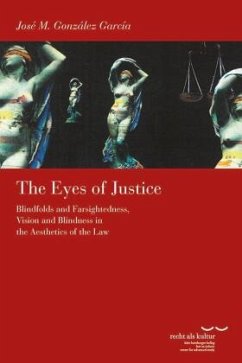Should Justice be blind or should she instead be capable of seeing everything, even the human heart? José M. González García examines how the iconography of Justice evolved over the course of history. Providing an overview of depictions of Justice in various ages and places, the book mainly focuses on "The Blindfold Dispute" that began to develop during Renaissance. While at first the blindfold was perceived as unjust, precisely because it denied Justice the ability to see everything, it transformed just a few years later into a positive symbol of the equality of all individuals before the law. And other depictions were added: supplementary eyes, transparent blindfolds, the double face of Janus, the returns of Astraea and the "Eye of the Law". The book also analyses important historic moments in which the crisis of the Law went along with a search for new forms of representing the gaze of Justice, as reflections on the art of Dürer, Klimt and Kafka as well as recent developments in political philosophy show.
Bitte wählen Sie Ihr Anliegen aus.
Rechnungen
Retourenschein anfordern
Bestellstatus
Storno






